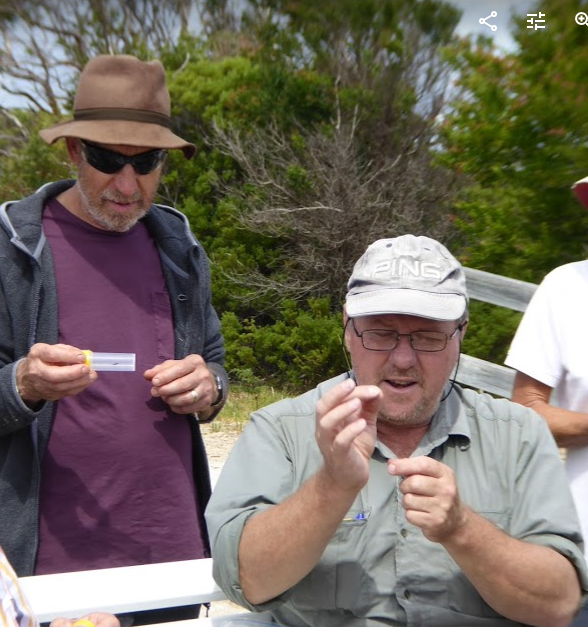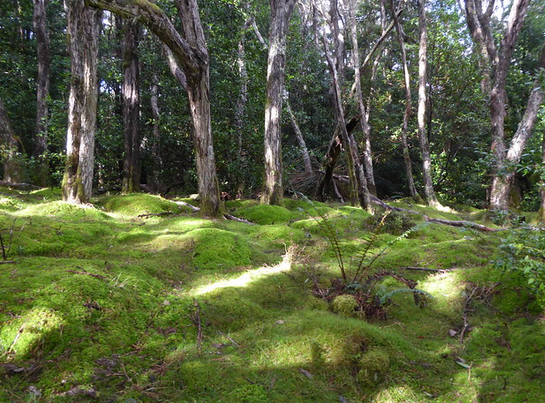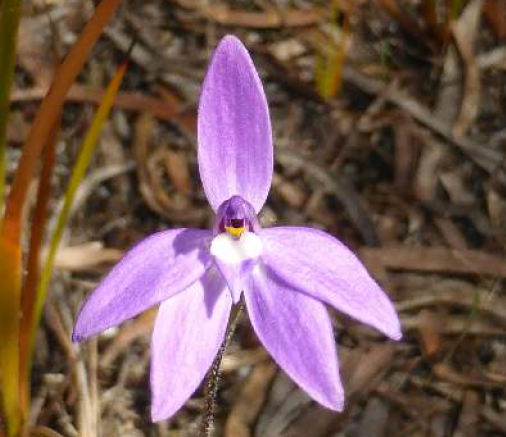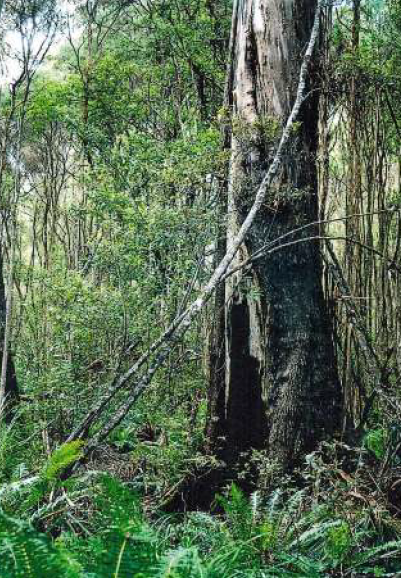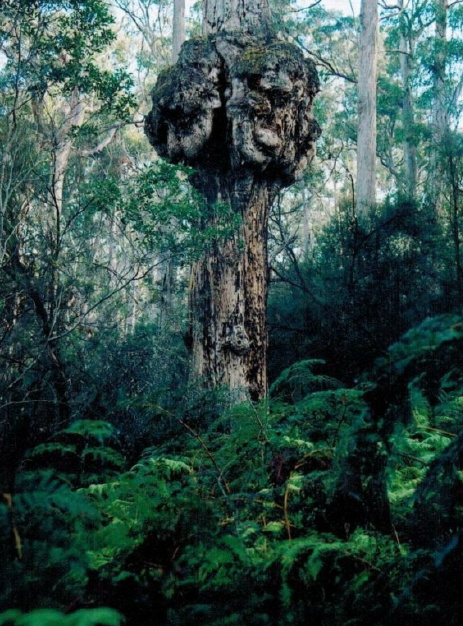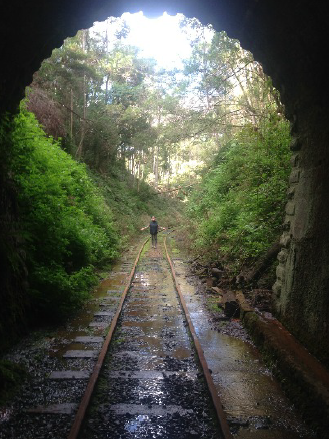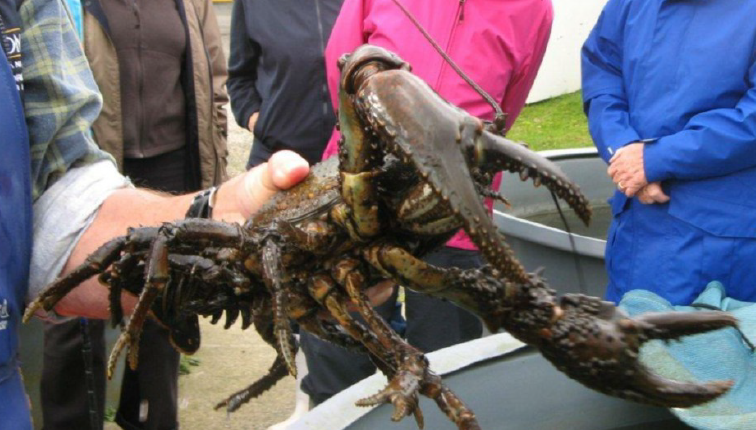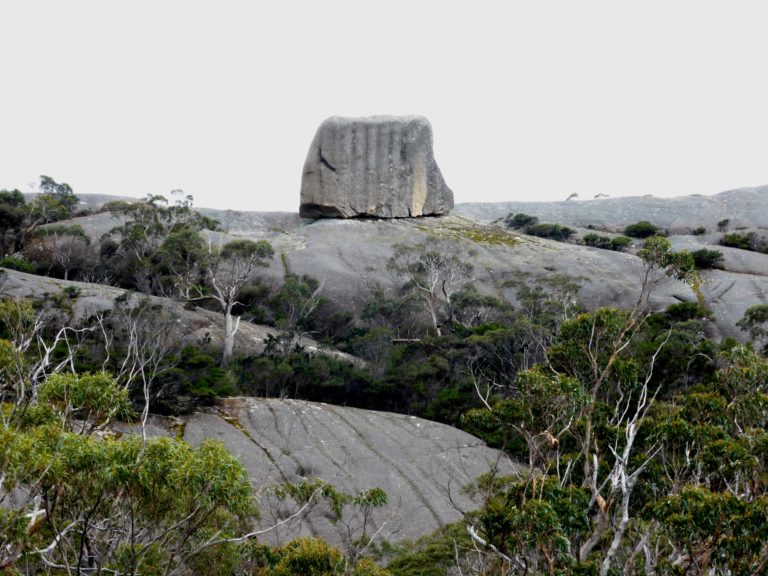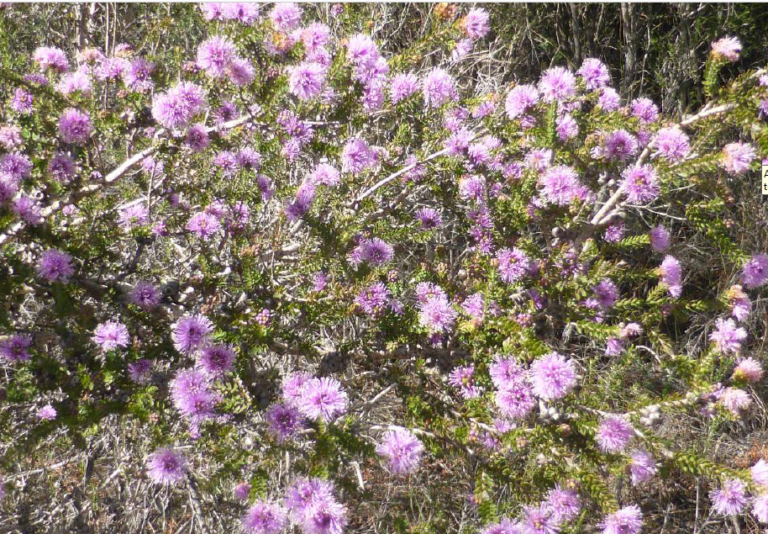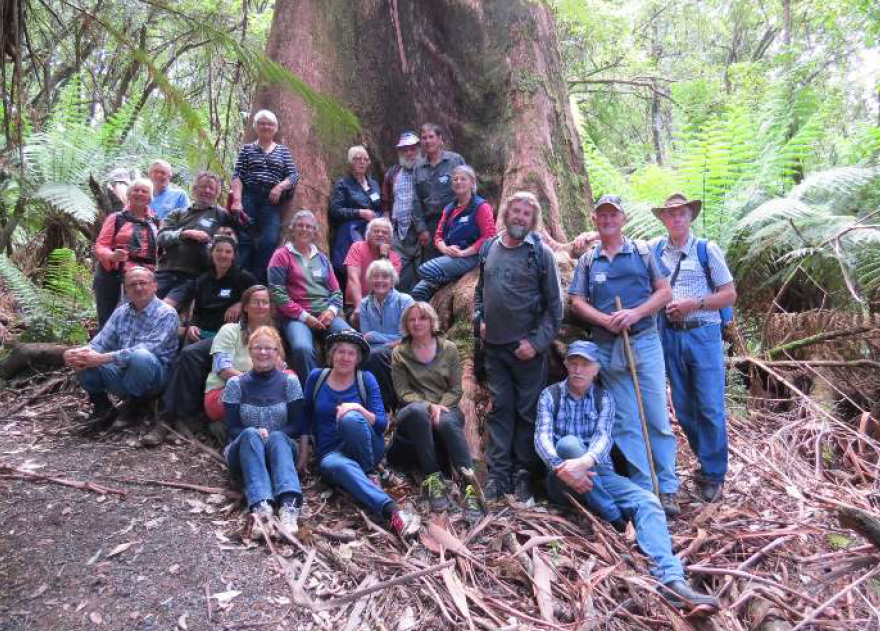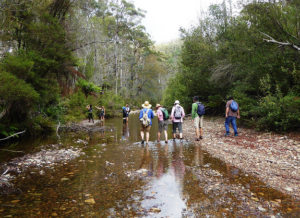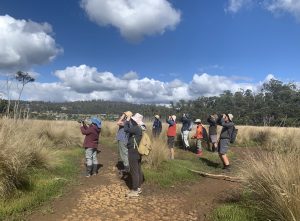February
Mount Stronach
A steep climb to the summit, mainly through a dry to damp sclerophyll forest dominated by stringybarks, black peppermints and white gums. There was a wide variety of understorey plants including currantwood (also called goldeywood), blanket leaf, native olive, prickly box, coffee berry, handsome flatpea, cheesewood, native pepper, guitar plant, prickly beauty and bracken.
March
Searching for the Crusader Beetle, Bellingham
Simon Fearn, a scientist working for the Queen Victoria Museum and Art Gallery (QVMAG), has discovered a breeding population of the Crusader beetle, which has not previously been seen in Tasmania, at Beechford, on the NE coast. It was the aim of this outing to see if the population had spread further east.
April
Blue Tier, Australia Hill Walk
The 4 km walk begins at Poimena and climbs at first through regenerating rainforest and past the abanadonned Summit Mine. Noted were many myrtles, native peppers, woolly teatrees, waratahs, mountain currants and celery-top pines. This area has special significance to Aboriginal Tasmanians because of the existence of cupules that appear to have been hollowed out of the granite, possibly over 1000 years ago.
May
Ralph Falls and Cash’s Gorge Circuit
An easy, relaxed walk that involved viewing the 90-metre drop of Ralph Falls from the Norm Brown Lookout, then continuing through the temperate rainforest to Cash’s Gorge and finally back to the car park along the moorland boardwalk.
September
Springfield
16 intrepid members and guests descended upon a lone, unsuspecting and endangered slender tree fern (Cyathea cunninghamii). This 8m tree fern is on the edge of a paddock at Springfield and is one of only about 200 known specimens in 15 locations around the state.

November
Boobyalla River Circuit
A walk through the river surrounds near Little Mt Horror—an infrequently visited area within the Payanna State Forest, with a patchwork of swamp forest and other types of riverine forest. This includes 96 hectares of Eucalytus ovata (swampgum) and E. obliqua (stringybark) that are highly significant for their conservation value.
December
The secretive birds at, and invertebrates in, Big Waterhouse Lake
Liz Znidersic told us about her project monitoring ten sites in the Waterhouse area with bioacoustic recording.
Among the many invertebrates we found were flatworms, water mites, three types of snails, adult diving beetles, and the larvae of beetles, midges, and dragonflies. There were also freshwater clams, seed shrimps, shrimps, scuds, backswimmers, and creeping water bugs


